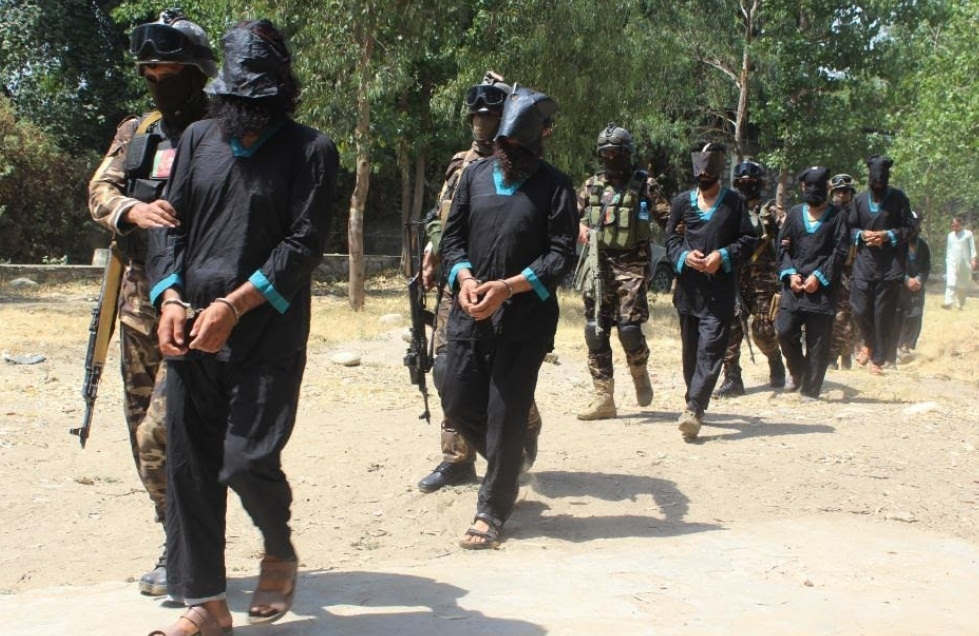Late Tuesday night the Afghan army claimed that it had thwarted an ISI plot in Kandahar. 24 Pakistani suicide attackers were killed in an air strike. Taliban commander Farooqi was killed and his armoured Humvee packed with explosives destroyed. For the last few days, the Taliban has surrounded Kandahar, the second largest city of Afghanistan. A fierce pitched battle is underway between the Afghan army and the insurgent group. The insurgents had been trying to enter Kandahar city for several weeks, after capturing surrounding districts. So far Afghan security forces, with the help of air strikes, have repelled assaults by Taliban fighters on the provincial capital.
Over the years, the Taliban and Afghan forces have regularly clashed in and around with the insurgents aiming to seize Kandahar city. The Taliban chief Hibatullah Akhundzada, hails from Panjwai, near the provincial capital.
Also Read: Amid falling rockets, Afghan Prez Ghani stands tall, says no need for bullet proof vests
Taliban’s control of Kandahar is the most significant aspect of the war. In the 1990s, Mullah Omar basically ran Afghanistan from his room in Kandahar (reportedly with a cash box that he used to dole out like sweets) . It’s also the place where he declared himself Leader of the Faithful and wore the Prophet Mohammad’s cloak to demonstrate his position.
“The fall of Kandahar means the fall of all Afghanistan,” Khalil Ahamed Mujahid, an Afghan parliamentarian from the province, was quoted as saying by TOLO news. The city is considered the birthplace of the Taliban movement.
Though the Taliban is saying that it is not in a hurry to take over cities, capturing Kandahar is its spiritual and strategic priority. Kandahar is close to the disputed Durand line–the Afghan-Pakistan border.
Last week, the Taliban had managed to briefly capture the Spin Bodak-Chaman crossing, which is particularly strategic as it provides the Taliban with direct access to the Pakistan region of Balochistan, where many Taliban leaders regularly travel for medical treatment. Many Taliban fighters in Afghanistan are recruited in Pakistan and this week, there were pro-Taliban rallies in the Pakistan cities of Peshawar and Quetta.
The Afghan army managed to recapture the city but not before thousands militants managed to join the Taliban. As per estimates and inputs, more than 10,000 Pakistanis have entered the war zone in Afghanistan to openly support the Taliban's offensive against the Ashraf Ghani-led Afghanistan government.
The presence of hundreds of terrorists from Pakistan-based Lashkar-e-Taiba (LeT) in Kandahar are believed to be behind the fighting triggering India's decision to pull out officials from the city.
Taking a pot shot at Pakistani army, Afghanistan Vice-President Amrullah Saleh posted an iconic picture of the Pakistan Army surrendering to the Indian Army during the Bangladesh Liberation War in 1971.
The image shared by Saleh is of historic significance because it dates again to 16 December 1971 when Pakistan surrendered to the Indian Army in Dhaka.
He said in his post: “We don't have such a picture in our history and won't ever have. Yes, yesterday I flinched for a friction of a second as a rocket flew above & landed few meters away. Dear Pak twitter attackers, Talibn & terrorism won't heal the trauma of this picture. Find other ways”.
We don't have such a picture in our history and won't ever have. Yes, yesterday I flinched for a friction of a second as a rocket flew above & landed few meters away. Dear Pak twitter attackers, Talibn & terrorism won't heal the trauma of this picture. Find other ways. pic.twitter.com/lwm6UyVpoh
— Amrullah Saleh (@AmrullahSaleh2) July 21, 2021
Leaders of the Afghan government have been issuing warnings to Pakistan that if it continues to provide support to Taliban then it has to pay a "very high price".
Also Read: Afghan army chief comes calling to India amid raging civil war




















